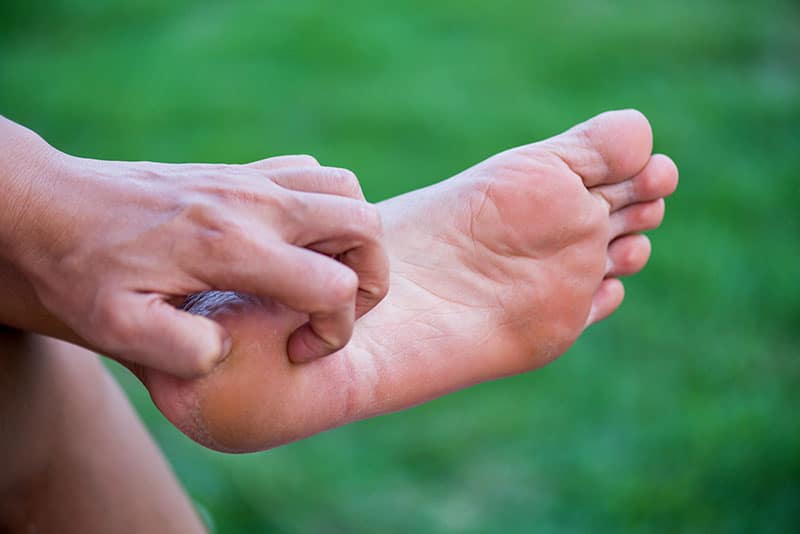How to Alleviate the Symptoms of Eczema on the Feet?

Eczema of the feet is also known as Dyshidrotic Eczema (DE). It affects the hands as well as the feet, and it is twice as likely to occur in women.
With DE, the skin is not able to protect itself as it normally should. The person affected by DE develops itchy, dry, scaly skin. Small, painful, itchy blisters also develop, especially on the hands and feet. They usually clear within two or three weeks, but the skin remains cracked, dry, and red.
There is no cure for DE just yet. Those affected by it have flares. DE flares are often the result of stress, warm temperatures, and prolonged wet skin. The flares can range from mild to complete impairment. When these flares occur on the feet, walking can be a difficult, painful, if not impossible, process.
DE develops suddenly in most people affected. Blisters usually present on the hands first, then occur on the feet. They are sometimes preceded by itching and a burning sensation. Pain and a scaly skin rash will appear around the location of the blisters. There can be profuse sweating in the blistered area. The blisters usually go away within two to three weeks, and even sooner with medical treatment. When the blisters have disappeared, the skin remains cracked, dry, and may peel. If DE flares occur frequently, the skin begins to thicken, peel, and develop deep, painful cracks.
Staph infections can occur with DE flare-ups. Symptoms of infection include blisters filled with pus, pain, crusting, and swelling of the skin.
Certain emotional and environmental factors can trigger DE flares. These include stress and worry, hot and humid weather, and keeping the hands and feet wet for prolonged periods of time. Researchers have yet to discover a cause of DE, but one cause is thought to be an extreme reaction of the immune system.
Treatment of DE usually encompasses the use of corticosteroids, anti-itch medication to reduce scratching, prescription lotions and creams, the use of moisturizers to reduce dry skin and DE flares. Cool compresses applied to the blisters can provide some relief. All of these treatments should be applied after washing hands, showering, or bathing. Other medicines include antibiotics to treat the infection.
Some people affected by DE may experience failure of treatment. In these cases, more extensive treatment is required. These methods of treatment include
• Botulinum toxin (also known as Botox
• Drainage of the blisters in a physicians office
• Prescription corticosteroids applied to the affected areas
• Corticosteroids in pill or injection form
• Light treatments.
When all of these treatment modalities fail, physicians may suggest changes in diet. Patients suffering from DE adverse to medical treatment often follow a diet that removes allergy-causing foods like shellfish and fish, nuts, soy products, eggs, cow’s milk, and gluten. Additions to the diet may include foods containing a plant-based substance called quercetin which has antioxidant and antihistamine properties. Foods high in quercetin include spinach, apples, kale, blueberries, cherries, and broccoli. Other foods high in probiotics may also be added to the diet of those suffering from DE.








